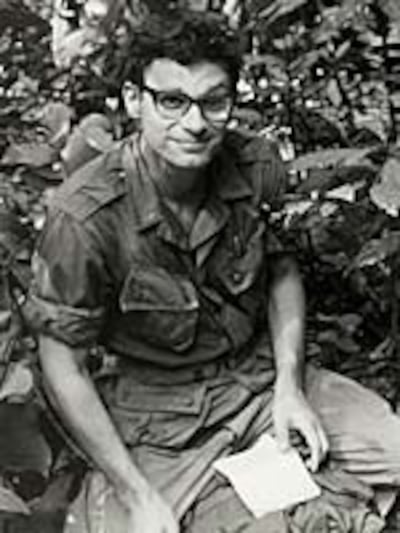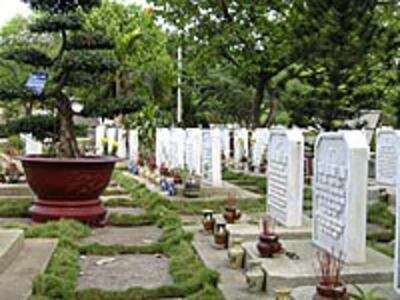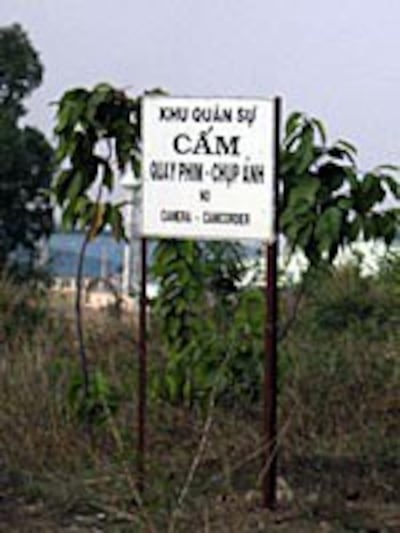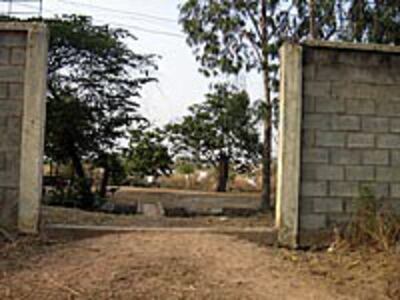Forth in a series

Now I suggest to my colleague and to my son Matt that we drive out to two big cemeteries—one honoring fallen soldiers from the Communist side and the other honoring those who died on the South Vietnamese side.
Both cemeteries are located just off the main highway leading to Bien Hoa, some 15 miles (24 kms) northeast of Saigon.
The cemetery honoring “revolutionary heroes,” on the south side of the highway, is dominated by Soviet-style statuary and a frieze depicting all of Vietnamese history as inevitably leading to the triumph of communism.
But once we get past the distortions of history, we find a beautiful setting.
Gravestones are white, immaculate, neatly marked, and shaded by small trees. Some are adorned with flowers or with urns containing sticks of incense. Surviving relatives of the men and women who lie here can take comfort from this well-tended resting place.
A short distance away to the north of the highway, we find the old South Vietnamese national military cemetery, called the Bien Hoa cemetery. At one time, this was the largest cemetery in southern Vietnam.

Now it is surrounded by a high cinderblock wall topped by rolls of barbed wire and overseen by watchtowers. A sign warns visitors not to take pictures. Even a nearby hillside temple, where one might normally begin a paying of respects, is off limits.
Next to the cemetery we see what looks like a few hundred new Vietnamese army recruits doing laundry and planting vegetables. Why are so many troops needed at such a spot? Why does the cemetery look like an armed camp?
These young soldiers based at the cemetery—born after the end of the Vietnam War—can no longer be threatened by the South Vietnamese “reactionaries” who lie by the thousands in the ground here. These dead South Vietnamese soldiers, called “puppets” by the Communist Party, are given no recognition in official histories or museums.

Through gaps in the cinderblock wall, we see that some of the graves are surrounded by tall weeds. A videotape reaching Vietnamese in the United States more than a year ago showed some gravestones to be damaged. Parts of the cemetery appear to have been vandalized.
Why was this allowed to happen? Why the high walls and watchtowers? What does the government fear?
Is this a prison for ghosts?
We decide to go directly through the front gate. Two uniformed guards challenge us. We have to have a specific gravesite to visit, they say, or a mission of some kind. It’s not enough just to want to pay respect.
Then a man wearing a white shirt and carrying a cell phone arrives at the scene on a motorbike. He has state security written all over him.
We begin to worry that this guy could cause problems for our Vietnamese driver, and we decide to leave.

Back in Saigon, a colleague, Jim Pringle, tells me that he once raised the issue of access to military cemeteries at a news conference with officials of the Communist Party Committee of Ho Chi Minh City (Saigon). An official responded that the government was trying to make the cemeteries more accessible to relatives of those who had died fighting on the South Vietnamese side.
Just before a dinner organized by ex-war reporters at Maxim’s restaurant in Saigon, former South Vietnamese Vice President Nguyen Cao Ky makes a brief appearance,
Ky had earlier claimed that because of a suggestion made by him, the Vietnamese government is beginning to clean and restore cemeteries that had been deserted for some 30 years.
Today, it’s unclear that that any such work has begun at the big Bien Hoa cemetery northeast of Saigon. And listening to Ky talk about the issue during his appearance at Maxim’s, I get the impression Party bosses in Hanoi need to sign off on the idea before any kind of restoration begins.
Produced for the Web by Maggy Sterner
